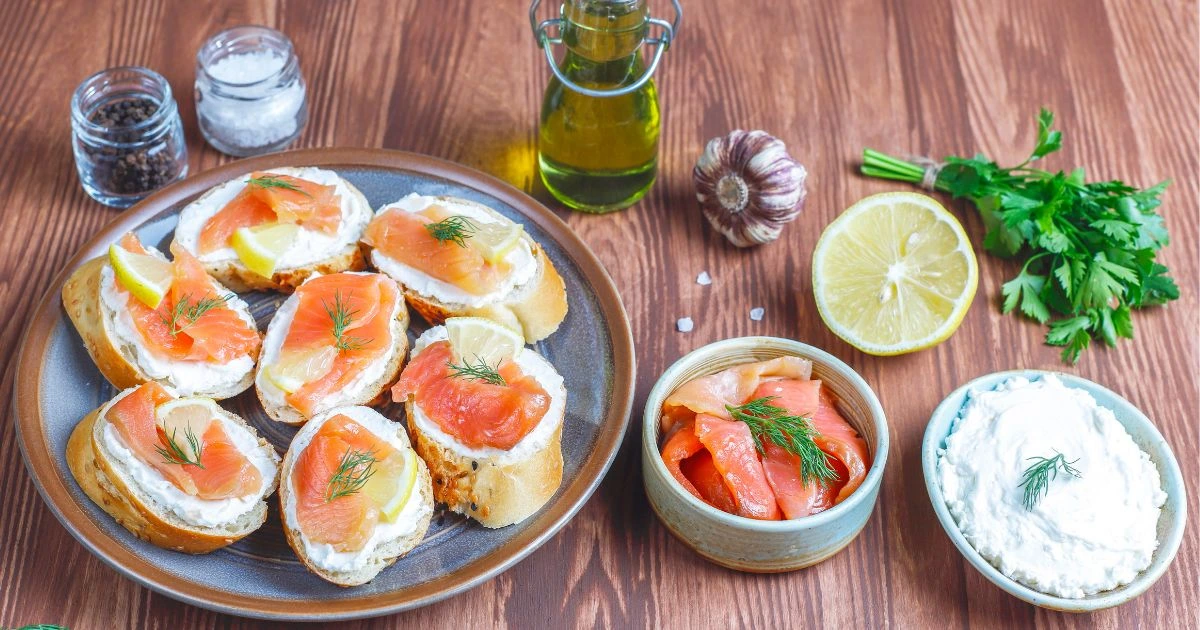The Best Canning Salmon Recipe: Preserve Freshness for Months
How to Can Salmon: A Complete Guide to Preserving Freshness and Flavor Year-Round
Table of Contents
Table of Contents
If you love fresh salmon, you may be familiar with the fleeting nature of its season. Whether you’ve spent the day fishing or bought fresh salmon from your local market, you might wonder how to enjoy its rich, savory taste even when it’s out of season. The answer lies in canning. This preservation method has been used for generations to capture the essence of fresh salmon and enjoy it year-round.
In this detailed guide, we will walk you through each step of the process to can salmon successfully. From selecting the freshest ingredients to mastering every aspect of preservation, you will gain the knowledge and confidence to create delicious, home-canned salmon. Plus, we will offer creative recipes to use your homemade canned salmon in delicious dishes. Let’s explore the time-tested process of preserving this wonderful fish for months to come.
Why Canning Salmon is a Smart Choice
Canning salmon is not just a means of storing fish; it’s a way to capture the vibrant taste of fresh salmon and preserve it for later enjoyment. Imagine being able to enjoy the deep, ocean-fresh flavors of summer no matter the season. Canning allows you to savor the rich, buttery taste of salmon throughout the year, long after the season has ended.
Benefits of Canning Salmon
- Extended Shelf Life: When properly canned, salmon can last up to a year or longer. You’ll always have access to a healthy, protein-packed meal at your fingertips.
- Retains Nutrients: Salmon is rich in omega-3 fatty acids, protein, and essential vitamins. Canning locks in these nutrients, so you can enjoy the health benefits of fresh salmon even months after it’s out of season.
- Cost-Effective: Canning your own salmon is a budget-friendly option. If you catch your own fish, it dramatically reduces your costs compared to buying fresh or frozen salmon regularly from stores.
- Convenient: Canned salmon eliminates the hassle of thawing or going to the store for fresh fish. It’s a perfect pantry staple for quick, easy meals on busy days.
Essential Ingredients and Equipment for Canning Salmon
Before diving into the canning process, ensure you have the right ingredients and equipment. Here’s a list of what you will need to get the best results.
Ingredients
- Fresh Salmon: Choose the freshest salmon available. Whether you catch it yourself or buy it from a reputable market, the quality of the fish is critical to the final taste and quality of your canned product.
- Sea Salt: Salt is essential for flavor and preservation. You’ll use it to enhance the salmon’s natural taste and ensure its longevity.
- Water: You’ll need water to fill the jars and create the necessary brine for the salmon.
- Vinegar or Lemon Juice (Optional): These help balance the salmon’s natural flavors and can improve the preservation process.
- Lemon Slices (Optional): For a fresh, bright flavor, add a slice of lemon to each jar.
- Spices (Optional): Customize your canned salmon by adding pepper, dill, garlic, or other spices to infuse unique flavors.
Equipment
- Canning Jars: Use wide-mouth mason jars, either pint or quart size, designed for pressure canning. These will ensure the salmon stays intact during processing.
- Canning Lids and Rings: These lids and rings create a vacuum seal, ensuring the salmon stays preserved safely.
- Pressure Canner: A pressure canner is necessary for safely processing salmon at high temperatures, which is crucial for eliminating bacteria and ensuring safety.
- Jar Lifter: This tool helps safely remove hot jars from the canner without burning your hands.
- Ladle and Funnel: For transferring the salmon and liquid into the jars.
- Clean Towels: Used for wiping the rims of jars to ensure a proper seal.
Preparing the Salmon for Canning

Once you have your ingredients and equipment ready, it’s time to prepare the salmon. You’ll need to clean, cut, and possibly pre-cook the fish before packing it into jars.
Clean and Prepare the Fish
- Scale the Salmon: If working with whole salmon, scale it thoroughly. This will remove the tough scales that are unpleasant to eat.
- Gut the Fish: If using whole fish, make sure to remove the internal organs. This step is optional if you prefer to work with pre-filleted salmon.
- Cut into Pieces: Depending on the size of your jars, cut the salmon into manageable pieces. This will help you pack it tightly into the jars for optimal preservation.
Optional Pre-Cooking
Pre-cooking your salmon is not required but can help eliminate some of its natural oils, which may otherwise result in a greasy texture in the jar. You can bake, steam, or poach the salmon for 10-15 minutes before packing it into jars.
Step-by-Step Guide to Canning Salmon
Now that your salmon is prepared, let’s walk through the process of canning it step by step.
Step 1: Sterilizing the Jars and Lids
- Sterilize the Jars: Place your canning jars in boiling water for at least 10 minutes to eliminate bacteria.
- Sterilize the Lids: Place your lids in hot water (not boiling) to soften the rubber seal, which helps create a tight seal when closed.
Step 2: Packing the Salmon into Jars
- Pack the Salmon: Place your prepared salmon pieces into the sterilized jars. Pack them tightly, but be careful not to crush the pieces. Leave about 1 inch of headspace at the top of each jar.
- Add Salt and Optional Ingredients: Sprinkle 1 teaspoon of salt into each jar. You can also add lemon slices, garlic, or dill for flavor.
Step 3: Sealing and Processing
- Fill with Water: After packing the salmon, fill each jar with water, leaving approximately 1 inch of headspace.
- Wipe the Rims: Use a clean towel to wipe the rims of the jars, ensuring there’s no residue that could prevent the seal from forming.
- Seal the Jars: Place sterilized lids on the jars and screw on the rings until fingertip tight.
Step 4: Processing the Jars in the Pressure Canner
- Prepare the Canner: Follow your pressure canner’s instructions for adding the correct amount of water and setting the proper pressure. You’ll need to process the jars at 10-15 pounds of pressure for 100 minutes (for pint jars) or 110 minutes (for quart jars).
- Process the Jars: Place the jars in the pressure canner, lock the lid, and allow the canner to come to the correct pressure. Process for the recommended time.
- Cool and Store: After processing, turn off the heat and let the canner cool. Carefully remove the jars using a jar lifter and let them cool completely. Once cool, ensure the lids have sealed correctly (they should be concave and not pop when pressed).
How to Use Your Canned Salmon
Your homemade canned salmon opens up endless meal possibilities. Here are a few ideas for how to enjoy it:
- Salmon Salad: Flake the salmon and add it to a salad with your favorite veggies and dressing.
- Salmon Patties: Combine canned salmon with breadcrumbs, eggs, and seasonings to form salmon patties. Fry them until crispy for a delicious lunch or dinner.
- Salmon Pasta: Add canned salmon to pasta dishes for a quick, healthy, and satisfying meal.
How Long Does Canned Salmon Last?
When properly canned, salmon can last up to a year when stored in a cool, dark place. Always check for signs of spoilage before consuming. If the lid is bulging or the salmon smells off when opened, discard the jar.
Frequently Asked Questions (FAQ)
- What is the best way to can salmon?
The best method involves using a pressure canner to process the salmon at high temperatures, ensuring its safety and preservation. - How long does canned salmon last?
Properly canned salmon can last up to a year if stored in a cool, dark location. - Can I can salmon without a pressure canner?
No. Canning salmon without a pressure canner is unsafe because the high temperature needed to destroy bacteria can only be reached with a pressure canner. - Do I need to add vinegar or lemon when canning salmon?
While optional, adding vinegar or lemon juice helps with flavor and preservation. It’s not necessary, but it’s a useful step to consider.
Conclusion
Canning salmon is a practical and rewarding way to preserve this nutritious fish. By following the proper steps and using the right tools, you can enjoy fresh-tasting, homemade salmon throughout the year. Whether you’re an experienced canner or a beginner, this comprehensive guide ensures your success. Take the time to master this process, and you’ll always have a jar of delicious salmon ready for meals, no matter the season.
Reviews
There are no reviews yet. Be the first one to write one.

